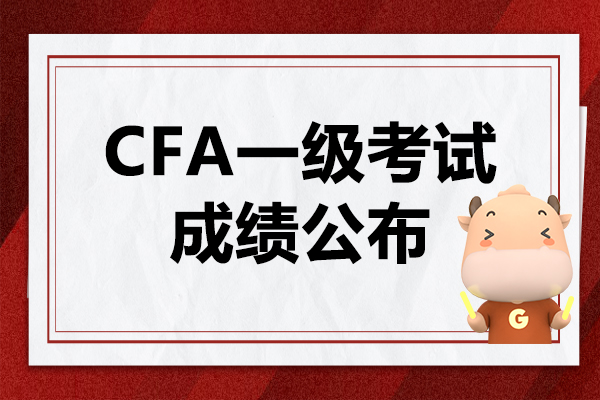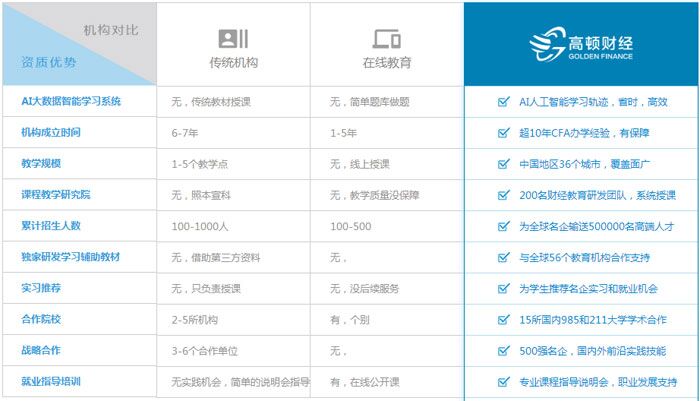各位考生想顺利通过CFA考试,除了掌握专业知识和答题技巧之外,还可以关注高顿网校的精品网课,高顿网校专业讲师为考生们提供考试复习笔记汇总,帮助考生更好地理解CFA知识,高顿祝各位考生考试大捷!
进入直播>> Reviewed by Mark S. Rzepczynski
Every four years since 1997, the National Intelligence Council — the center for midterm and long-term strategic thinking in the US intelligence community — has prepared a global trends report for the president of the United States. This report is the intelligence community’s best assessment of critical drivers and global scenarios over the next 15 years. The latest report, Global Trends 2030: Alternative Worlds, provides a thought-provoking read for any money manager who even minimally considers a long-term view important in making portfolio allocation decisions.
The very process of evaluating alternative future scenarios offers an opportunity to shape those alternative worlds and adapt to the changing and uncertain environment we may face in the coming decade. More importantly, examining alternative futures reduces the chance of Donald Rumsfeld’s “unknowns” affecting a portfolio. We may not handicap events correctly, but at least we can consider their existence. The unknowns of today are the future extremes that will cause portfolio tail performance risks and opportunities.
For all the bemoaning of the short-term focus on company earnings and investment performance, very little analysis is readily available on the predicted global alternative futures. At best, Wall Street firms present long-term perspectives for the year and produce occasional thought pieces, but the main focus is usually on the current market. Nevertheless, most can argue that successful investing is about anticipating long-term trends, changes, and surprises. Although determining the future environment is necessary for success, there is a potential tension between short-run and long-run investing. Portfolio managers want to pick the best portfolio over the next quarter, yet major gains can be achieved only through early positioning for the long run, which may not translate into immediate performance gains. Only by thinking of these alternative futures and weighing each one’s probability can we possibly get long-term portfolio allocations right.
Who can blame investors for their short-term focus given their poor track records in forecasting anything close to reality? Still, one of the best methods for delivering excess returns is to make asset allocation decisions on the basis of a long-term view. With a time frame of 15 years, the Global Trends series is outside the norm of most investor horizons; however, that fact does not change the value of any discussion. Markets have often found that musings about tomorrow can be quickly compressed into events today.
Global Trends 2030 is not the stuffy tome that one usually expects from a government agency. Foremost, it is meant to be read. The color print, charts, and pullouts — as well as the easy-to-read summary and overview — make this book readily accessible for any investor. The language used is not your usual dry, government “documentese.” The overview is broken into megatrends, game changers, and potential alternative worlds; this is the vocabulary not of the academic but, rather, of the pop consultant business writer and seems to be heavily influenced by the style of writing and presentation in the works published by the McKinsey Global Institute. Although this approach may turn off some readers, it can serve as a means of creating a discourse between readers and the report’s primary author, Matthew Burrows.
Skepticism of any long-term forecast should be the norm after the devastating research of Phillip Tetlock revealed the poor quality of forecasts by so-called experts. However, the combination of trends, game changers, and alternative worlds provides sufficient breadth of analysis to give any critic an idea of how alternative global scenarios may arise. Instead of a set of Cassandra-like forecasts of doom or a Pollyannaish burst of optimism, Global Trends 2030 offers a balanced presentation on how the world may develop. Although the book acknowledges potential black swan events, it does not present a flock of them. Four megatrends serve as the primary focus for the reader’s attention. All the major trends involve demographics, power politics, and the demand for resources. These trends are present in current investment thinking and should not be surprising, but Burrows provides a useful context of the government’s point of view.
Individual empowerment is a theme that has been the focus of emerging-market investing. The rise of the middle class (consumers) has been a direct result of wealth creation beyond the developed world. This phenomenon is coupled with the continuing demographic trend that pits vigorous growth in emerging markets with young populations against slow growth in developed markets with old populations and population slowdowns. The great divide across the globe will not be North/South but, rather, between the elderly and the young. Along with the ascent of the individual will come the further diffusion of power and a more restricted US hegemony. Networks and coalitions — not a sole superpower — will drive sovereign and nongovernment power structures. A clear megatrend will be the impact of demographic shifts and changes in empowerment on the balance of power over the supply of basic resources — food, water, and energy. If one needs a rationale for focusing on commodities, emerging markets, and multinational corporate investments, this report provides the global framework.
Although megatrends are likely, the future is not inevitable. There will be game changers, and Burrows discusses developments that could steer the world away from likely scenarios. The diffusion of power will be affected by the fact that the world will be more crisis prone. There will be no superpower that can police the world; consequently, political uncertainty will increase between parties fighting for their own interests. Market volatility can only go up with the threat of ongoing crises in an unstable world. The potential for increased conflict will be a pall hanging over the globe in a way that did not exist during the Pax Americana. Specifically, the world will see continued regional instability that will still be centered in the Middle East and spread, to a growing degree, to South Asia. These game changers are a continuation of the trends already seen in this century. Further declines in overt US power and hegemony are likely. The United States will have to further develop its “smart power” through coalition building, a process that has generally not been a US strength.
Demographics will continue to be a point of stress around the globe as generational conflicts increase. The current instability of social welfare — moving benefits from the young to the old through government deficits in developed countries — must be addressed. The generational war over government resources will displace the current consumption life cycles of the elderly being subsidized by the young. The true game changer will be the ability of new technology to solve these problems. Unfortunately, although technology may be able to solve some demographic problems, it is less likely to provide solutions for domestic, regional, or global conflicts. Technology has actually made conflicts harder to avoid.
Burrows also provides a section on potential worlds that can arise from combinations of megatrends and game changers. The worst case is a stalled engine that sees increased risks from interstate conflicts, with a United States that decides to draw inward. A Hobbesian state of brute-force politics will see a downward spiral of trade and economic growth. The potential positive world is a state of fusion whereby the United States and China, as the two major economic powers, find a way to cooperate on the basis of mutual interest in maintaining the strong links of trade and finance. A third potential world is classified as the “genie out of the bottle.” Demographic changes and individual empowerment may lead to greater divergences between the haves and the have-nots. Not unlike the winner-take-all environment of the last 20 years, a conflict could arise from the ascent of some to the exclusion of others. Another potential world is one where single-state actors will drive the dynamics globally. However, we have seen two wars and other conflicts develop around nonstate actors, and this trend is unlikely to dissipate.
Although Global Trends 2030 contains significant new insights, some of the trends it presents are not new. We have heard these warnings before. The food/water/energy nexus megatrend is the Malthusian siren song of shortages. A forecast would not be complete without thinking through the economics of shortages. Perhaps the future will be different this time, but the last 100 years have seen a decline in real commodity prices. This megatheme is the ongoing battle between Malthusians and “cornucopian” innovators. Being long commodities can often be thought of as being short innovation — the likely response to higher prices.
Considering the broad tapestry of forecasted global trends, there can be many areas of criticism for what is disregarded, underemphasized, or deemed inessential. Given Burrows’s economics background, surprisingly little emphasis is placed on the power of markets to solve some of these problems. And although there is much emphasis on individual empowerment and demographics, there is little discussion of political structure, including property rights, courts, and democracy. The issues touched on by what may have been the best book on business and economics over the last two years — Why Nations Fail — are not even mentioned.
The game changer for whether there will be a middle class in many countries or whether people can escape from poverty will be the structure of government. Whether the hungry will be fed, innovations found, or resources developed will all be driven by whether competitive markets are allowed to flourish or whether states take control of the means of production. Of course, the path of any potential world will be driven by large-state players. But over the last few decades, we have seen that the movement from commanding heights to an environment of market competition coupled with demography has been the best catalyst for unleashing wealth.
Global Trends 2030 was not written for investors, and so the reader must extrapolate and draw inferences concerning the impact of predicted trends and game changers on equity and fixed-income markets. Any reader looking for a road map on what these scenarios will mean for finance will be disappointed. It is critical, however, to think about these issues. One has only to look at the long history of returns to see that there have been national and regional losers and winners. The direction of risk premiums is a result of changes in global political and demographic risks — what is now referred to as the rare events theory of premiums. World wars, depressions, and economic rotations are all issues (not discussed in the report) that make the difference between capital preservation and destruction. Tail risk is found in the transitions to alternative worlds. In the worst case, these events happen quickly, with little warning. Tail events are likely not just a single occurrence but, rather, are structural changes in the normal way of doing business.
John Maynard Keynes discussed animal spirits not as speculative excess but as the optimism necessary to make long-term investments when the future is murky — that is, in the face of unknowns. A guide to alternative futures is essential if investors are to better use their animal spirits. This book provides a helpful set of scenarios that could merit hours of discussion.
高顿网校温馨贴士:各位考生,如果您在学习中遇到任何疑问,请登录高顿部落CFA论坛,随时与广大考生朋友们一起互动交流!
进入论坛>>
版权声明:本条内容自发布之日起,有效期为一个月。凡本网站注明“来源高顿教育”或“来源高顿网校”或“来源高顿”的所有作品,均为本网站合法拥有版权的作品,未经本网站授权,任何媒体、网站、个人不得转载、链接、转帖或以其他方式使用。
经本网站合法授权的,应在授权范围内使用,且使用时必须注明“来源高顿教育”或“来源高顿网校”或“来源高顿”,并不得对作品中出现的“高顿”字样进行删减、替换等。违反上述声明者,本网站将依法追究其法律责任。
本网站的部分资料转载自互联网,均尽力标明作者和出处。本网站转载的目的在于传递更多信息,并不意味着赞同其观点或证实其描述,本网站不对其真实性负责。
如您认为本网站刊载作品涉及版权等问题,请与本网站联系(邮箱fawu@gaodun.com,电话:021-31587497),本网站核实确认后会尽快予以处理。


 更多服务
更多服务






































